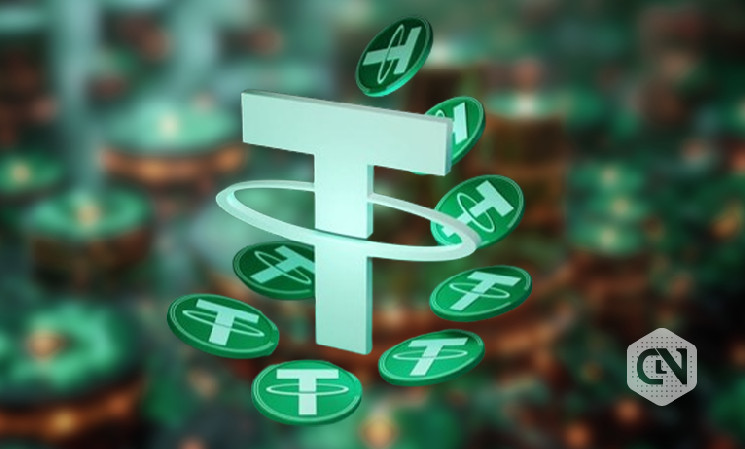
DeFi, which stands for Decentralized Finance, has the potential to change the way financial services are being offered by eliminating the roles of intermediaries such as banks and brokers. Blockchain technology is a decentralized, transparent platform where individuals can enter the system directly. Moreover, they do not need an intermediary during financial interactions with their peers. This change is not just a matter of transaction minimization. Besides, it will broaden the financial inclusion.
DiFi has an important element—stablecoin, as showcased by the case of Tether (USDT). Instead, Tether uses the USD as a reference point, meaning the token’s value remains steady even when the cryptocurrency market is usually volatile. This stability creates a basis for large-scale transactions and a safe place for crypto investors who wish to shelter from the fluctuations of the crypto market.
Why Tether in DeFi?
Cryptocurrency markets, however, are usually known for their outstanding volatility, often accompanied by rises and falls in the prices for the same currency over short periods. This volatility can affect the human element of the Defi ecosystem because it is unsuitable for day-to-day transactions or strategic financial planning. Tether (USDT) is valued pegged to the US dollar, giving it the essential role of stability anchor. This is because Bitcoin’s value remains unchanged despite the larger crypto-market’s ups and downs. Tether’s predictable asset status confirms it as a haven for decentralized finance (DeFi) users. It allows them to hedge against volatility, conduct transactions with assured value, and manage their finances with greater certainty and fewer risks. As a result, Tether becomes a crucial piece of the DeFi puzzle.
Key Use Cases of Tether in DeFi
Tether (USDT) is a multi-purpose utility within the DeFi space, which financially complements the entire ecosystem by facilitating multiple functions that improve the efficiency and accessibility of decentralized finance.
Stable Trading Pairs
The main function of Tether in DeFi is to use it as the base pair for stablecoin trading. Crypto markets are the most volatile, with coins like Bitcoin and Ethereum usually experiencing volatile price movements. These fluctuations make price forecasting harder and portfolio management more complicated. Tether offers a stabilization tool (USDT) that remains unchanged in its value, set to be equal to the US dollar. Consequently, investors can make price calculations and diversify their investment portfolios with little fear of market swings, which could unexpectedly affect the value of assets. In other words, Tether is a securing tool that allows traders to make quick-paced and smart trading decisions in a highly volatile trading environment.
Lending and Borrowing
These days, lending and borrowing platforms with DeFi are widely used and allow users to make their assets work to get a higher return or liquidity. Tether is pivotal to this system as it has become a security. A Tether user can readily pledge reserves against loans, which can be used in other cryptocurrencies to maintain a stable value. This reduces the risk of liquidation, which is usually a problem with other volatile assets.
Facilitating Payments
Tether not only improves the deal efficiency within the DeFi space but also enables seamless transactions. Stability is the main advantage of it. It can make transactions faster than traditional banking systems, often involving processing time and high fees. More particularly, Tether online casinos can succeed tremendously by introducing USDT in the online gambling sector. Such Tether casino sites can provide services with a lower volatility risk, which could benefit players and operators. Tether offers a compelling solution for facilitating faster, cheaper, and more secure transactions in online casinos. Its stability as a stablecoin reduces volatility risks for both players and operators, while its speed, low fees, and global accessibility make it an ideal payment method for the fast-paced world of online gambling.
Bridging Fiat and Crypto
The last role of Tether is to serve as an essential link between traditional finance and DeFi’s growth market. Through it, users can gradually move from fiat currencies into cryptocurrencies without necessarily dealing with the currency market’s volatility. This essential function may link new users to the DeFi sphere and allow them to explore and experiment. It streamlines the process of entering and exiting the market by providing the means to convert the fiat into USDT, which can be utilized to interact with various other DeFi applications. This newfound convenience makes the transition for customers less bumpy and allows more users to try out DeFi, thus welcoming more people into the ecosystem. These use cases, in aggregate, represent a great deal of Tether’s influence in expanding the DeFi environment; one of the most important factors is the function, accessibility, and stability of the DeFi system.
Conclusion
In summary, Tether (USDT) is an indispensable block of the DeFi infrastructure blockchain, which provides stability, throughput, and access in the face of the inherent volatility of the crypto market. Indeed, it creates favorable trading pairs and plays a vital role in lending, borrowing, and payments. It also creates a connection between cryptos and fiat. This cryptocurrency facilitates transfers for newcomers and creates a convenient and secure investment environment. At the same time, USDT is useful while conducting various online transactions, like on cryptocurrency-based casino sites. Through crypto ether stabilizing the volatile crypto world, ether is not only able to attract more users but can also help strengthen the foundation of decentralized finance.
